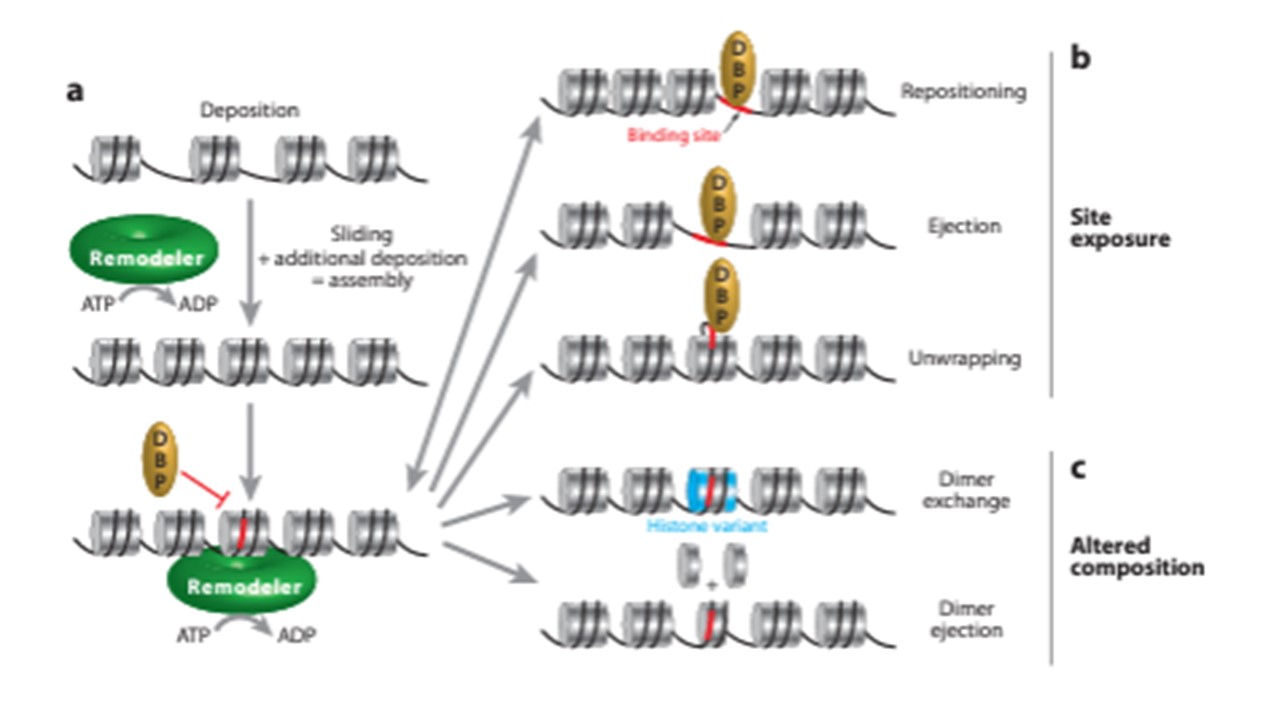The different outcomes of chromatin remodeling. Remodelers (green) can assist in chromatin assembly by moving already deposited histone octamers, generating room for additional deposition (a). Remodeler action on a nucleosome array results in various products that can be classified in two categories: (b) site exposure, in which a site (red) for a DNA-binding protein (DBP), initially occluded by the histone octamer, becomes accessible by nucleosomal sliding (repositioning), or nucleosomal eviction (ejection), or localized unwrapping, and (c) altered composition, in which the nucleosome content is modified by dimer replacement [exchange of H2A-H2B dimer with an alternative dimer containing a histone variant (blue)] or through dimer ejection. Clapier CR, Cairns BR. The biology of chromatin remodeling complexes. Annu Rev Biochem. 2009;78:273-304. PMID: 19355820.
